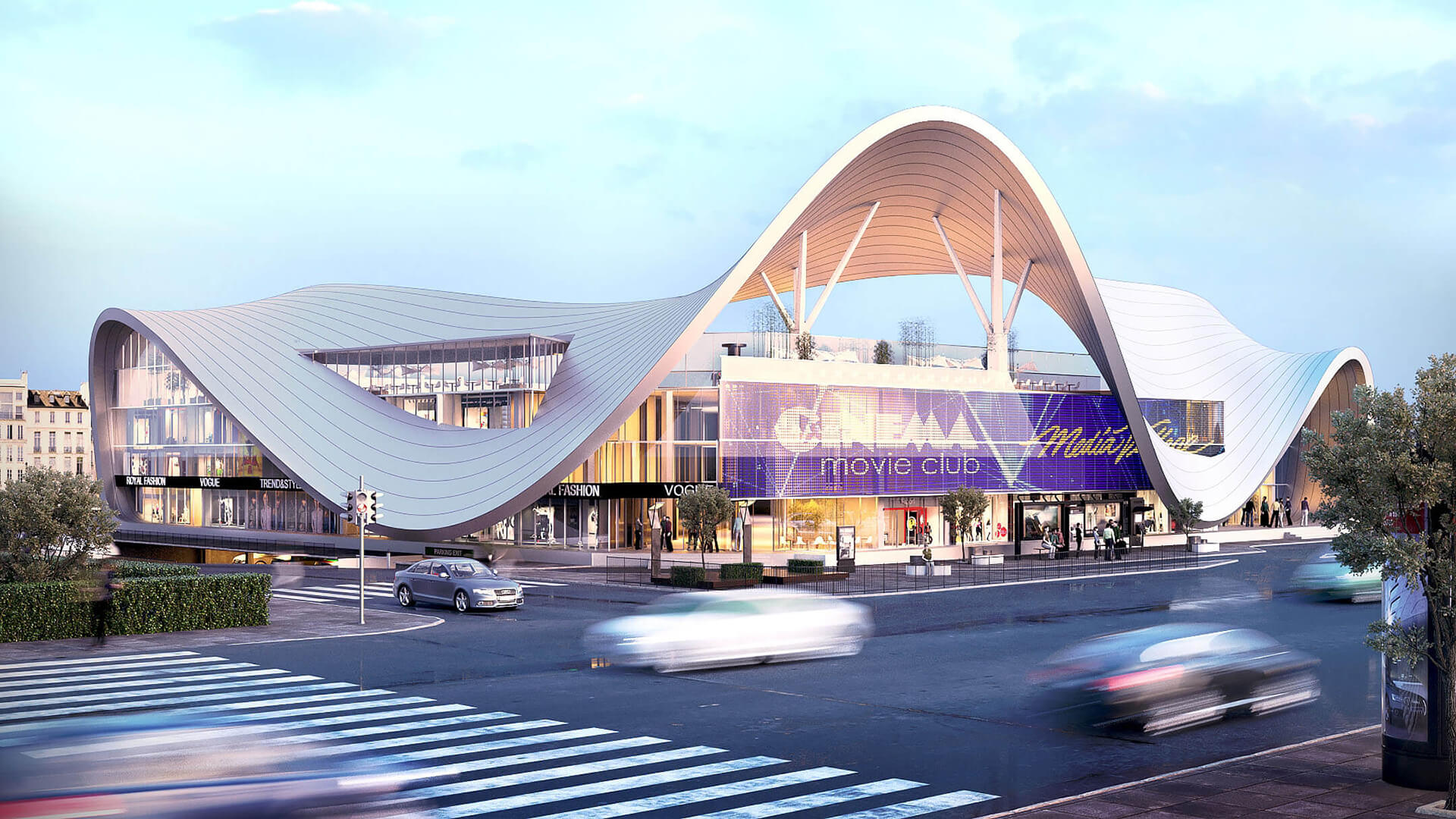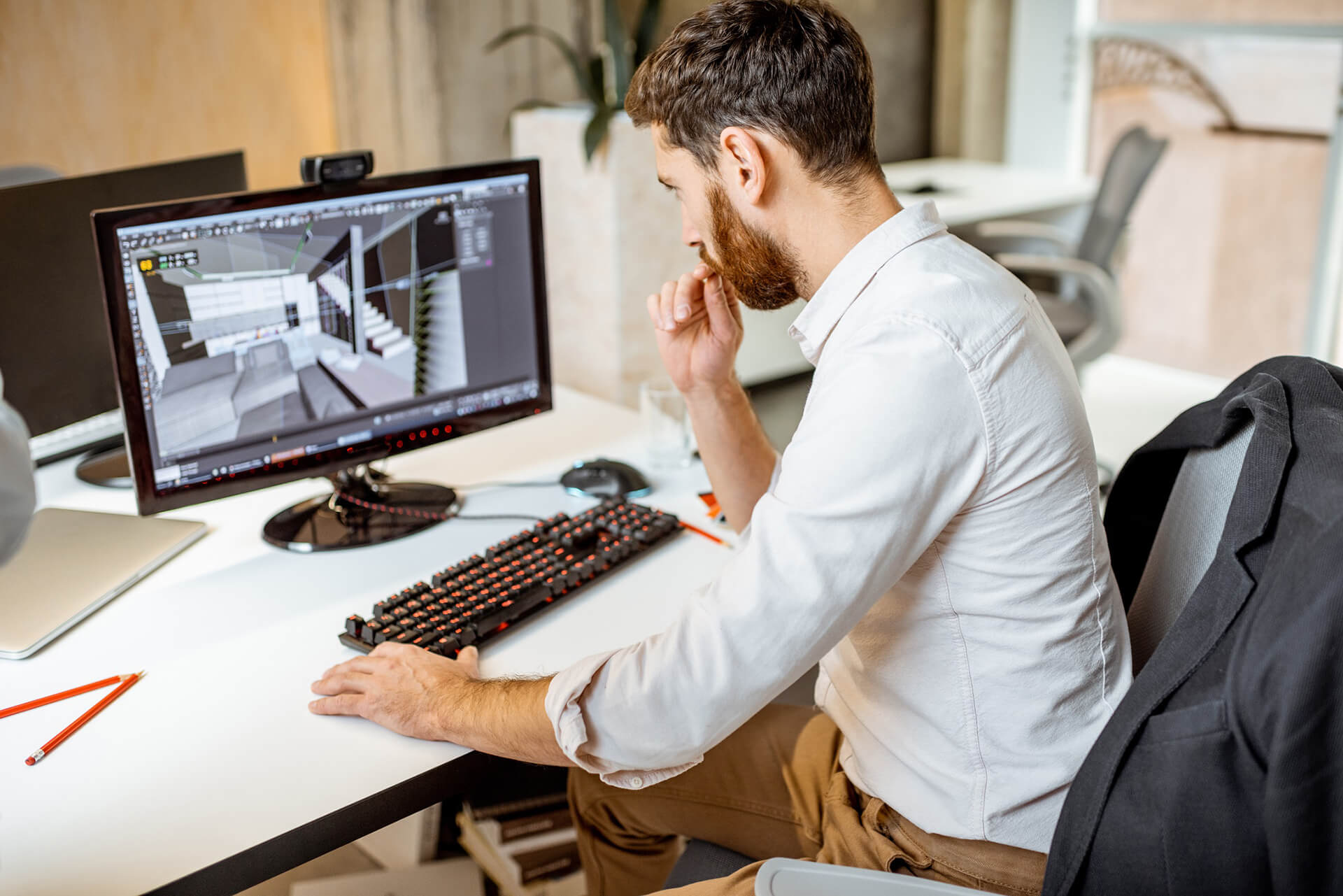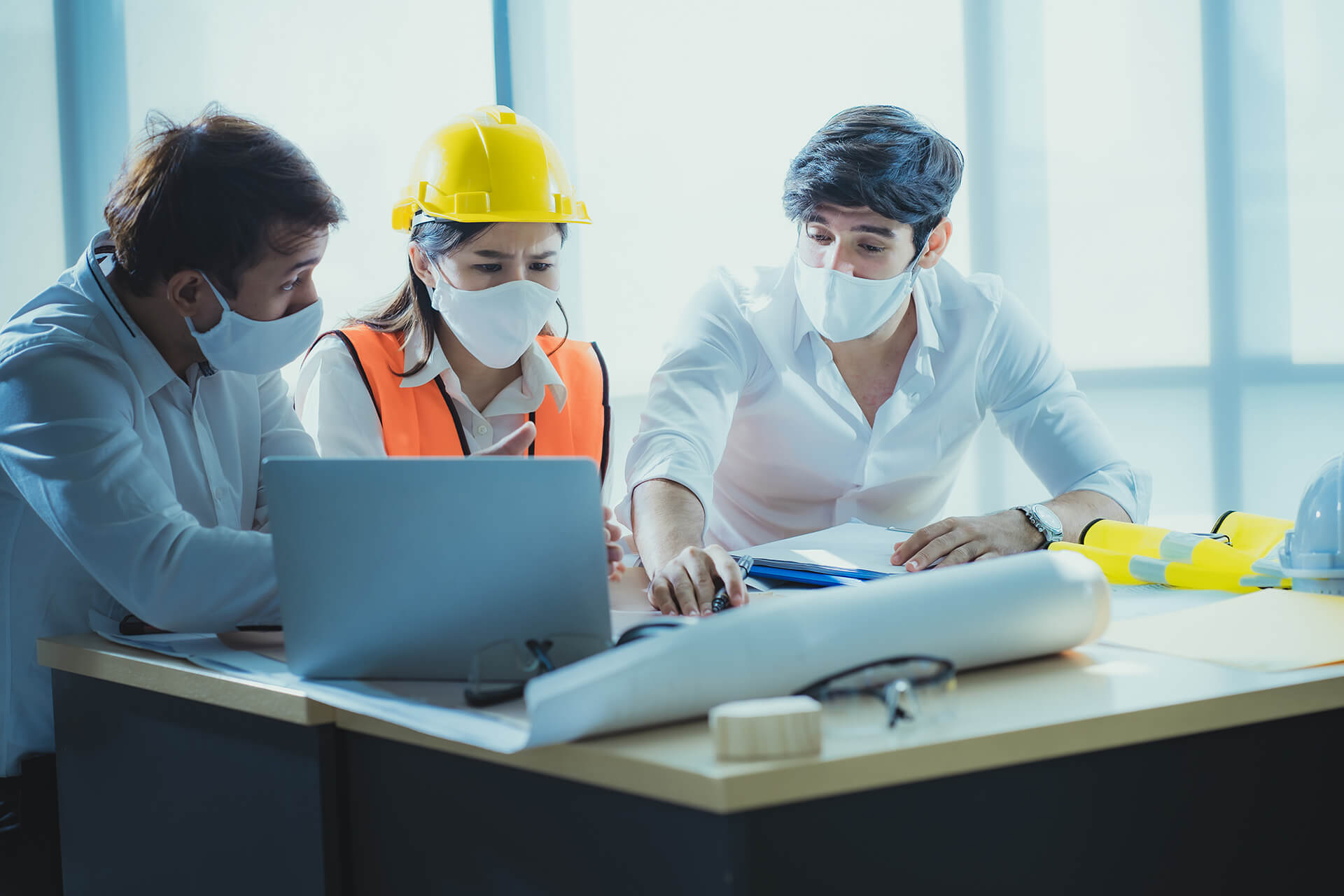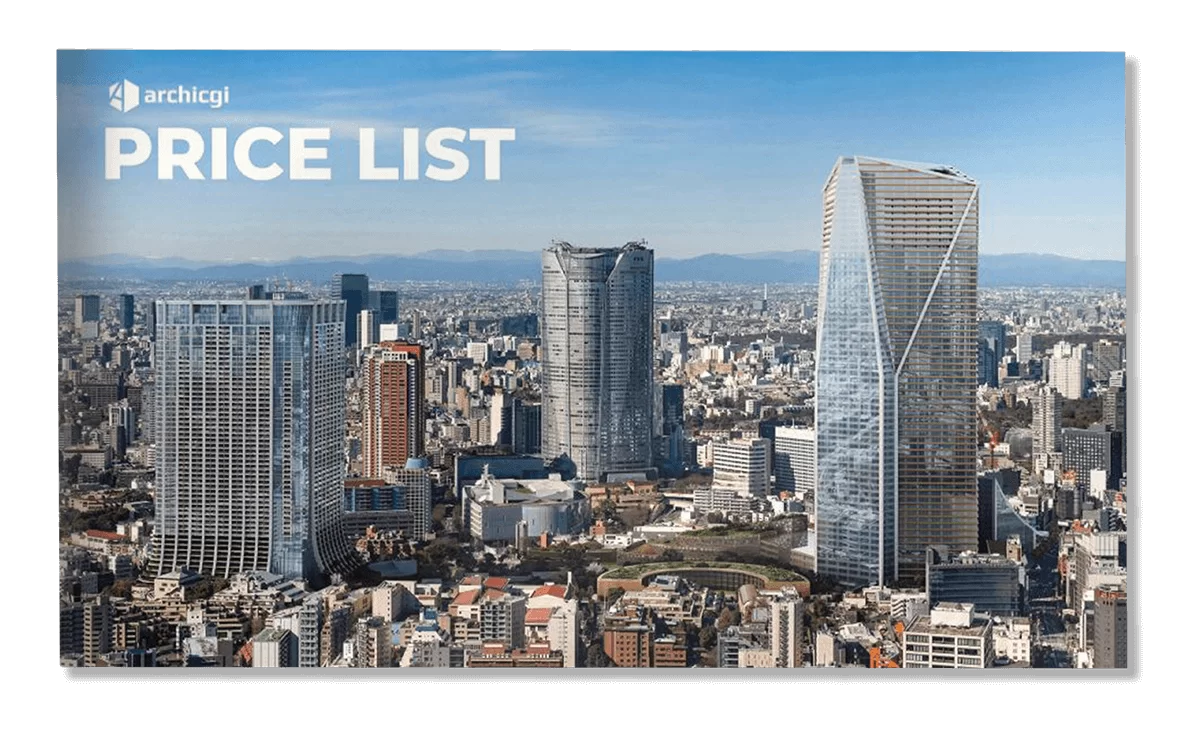The Covid-19 pandemic has posed some serious threats and challenges to most industries. And architecture is no exception. Project cancelations and indefinite delays are making AEC professionals rethink their work processes. So, what is the impact of coronavirus on the architecture business? And how are industry players adapting to the consequences?
As for the workflow change, AEC professionals are adopting technologies such as 3D architectural visualization, BIM, and off-site construction way faster than before. Those help to optimize the process of developing and implementing concepts. Also, it’s necessary for improving communication between stakeholders. The latter is especially relevant now. Because most business interactions are happening via Zoom calls and emails. As for the architecture market, there’s a serious decrease in demand for certain projects. But it’s expected to grow as innovative, sustainable designs are becoming a trend. Want to know more? Then let’s go!
#1. The Pandemic Has Caused a Drop in Demand for Nonresidential Projects

According to the American Institute of Architects, spending on nonresidential projects in the US dropped by 8% in 2020. In 2021, this trend will continue with an additional 5%-decline. The commercial construction sector, which includes offices, retail spaces, and hotels, is being affected the most. Unfortunately, that comes as no surprise. After all, most companies have switched to remote work and many are experiencing financial losses. Plus, people are traveling less because of coronavirus. Overall, the drop in spending here will reach 12% this year and another 8% in 2021.
The industrial building sector is seeing a decline as well, although at a less dramatic rate. Then, there’s an even smaller dip in spending on institutional construction. That includes healthcare-related, educational, and religious facilities. However, experts are expecting growth in this sector with projects focused on public safety. Of course, that will hardly make up for all the losses. Especially for the industry that hasn’t seen a fall like that for almost a decade. This impact of coronavirus on the architecture and construction market is quite significant. It will urge many companies to transform their business models and come up with new offers.
#2. The Need for Remote Collaboration Has Resulted in Full-Spectrum Digitalization

Now, the switch to remote work has resulted in much greater changes in the architecture industry than a temporary slump in commercial property development. For architects themselves, it sparked the need for a massive digital transformation of their work processes. In particular, we are now seeing widespread adoption of communication and project management software, such as Monograph, ArchiSnapper, and IngeniousIO. Also, the use of BIM and 3D architectural visualization has increased significantly.
All those technologies allow architecture professionals to plan and manage their projects more efficiently while collaborating remotely. But there’s more to it. Using BIM technology with 4D and 5D simulation makes it possible to create highly detailed intelligent 3D models of buildings, implement more sustainable design techniques, and identify potential conflicts and risks to optimize schedules. This way, results can be delivered on time and within budget. Even with the restrictions put by coronavirus on the architecture industry operation.
Present your architectural project like a work of art with AI-powered CGI
At the same time, the use of CGI helps to better communicate with various stakeholders, starting with clients. Photorealistic 3D renders of concepts make it easier for architects to explain their ideas and get approvals. And today, this ability to present one’s vision is more valuable than ever, as many specialists are developing innovative designs to answer the challenges posed by the coronavirus pandemic.
#3. Off-Site Construction Has Become the Answer to Many Challenges

Another coronavirus-related trend among architecture firms is about making their work even more efficient by cutting building time and expenses. One can achieve that with off-site construction. In this case, a large part of building elements is pre-fabricated and transported to the site for assembly. To start this process, one needs to implement design-for-manufacturing-and-assembly (DFMA) techniques during the concept development phase. And that’s yet another great thing that becomes possible with BIM.
Using professional BIM software, architects and engineers can identify elements that can be assembled off-site, divide buildings into manufacturable units, and optimize the design for quicker and safer assembly. This approach allows for reducing material waste, which helps to cut costs and make the whole process more sustainable. Furthermore, modular assembly requires a lesser involvement of heavy machinery on the site. Also, it produces much less noise, dust, and vibration. That makes it possible to build on sites that are too challenging for the conventional process. Or in places where there are restrictions on noise and air pollution.
And, of course, off-site construction helps to limit the movement and interaction of different teams of contractors and subcontractors. At this moment, it’s the greatest benefit, as the personal safety of workers remains the priority. But even though this trend started as an attempt to mitigate the negative impact of coronavirus on the architecture industry, it’s now likely to stay. Because, as we can see, this way of building is really more sustainable, as well as time- and cost-efficient. And the results of it are just as good as those of the conventional process.
#4. AEC Professionals are Finding New Opportunities Amidst Lockdowns

Apart from damages and constrictions resulting from the coronavirus pandemic, AEC professionals are seeing new unexpected opportunities to advance their work. First of all, there’s the drop in fuel prices. Also, we’re seeing increased availability of workforce and equipment due to numerous delays and cancelations of architectural projects. Combined, those two things allow businesses to reduce their building and logistics expenses.
Then, there’re lockdowns. As public spaces are empty and road traffic is minimal, construction teams can carry out disruptive works during the day. That means no more expensive night shifts. For instance, there’s more freedom for doing work that would otherwise violate noise and vibration restrictions. Furthermore, it’s possible to carry out activities that require water and power shutdowns in commercial districts, as well as road closures. Being able to do all that during the day, companies can cut costs and deliver results in a more efficient way. Considering the overall damaging effect of coronavirus on the architecture industry, it’s more than worth it for businesses to explore such opportunities to stay afloat.
#5. The New Normal Is Pushing Architects to Create Innovative Designs

We can all agree that this coronavirus crisis experience will shape a new approach to creating the architecture of the future. In particular, the industry is expecting fresh and creative designs focused on sustainability, healthier living, and social distancing that doesn’t impede human interaction. In fact, one can already see the reaction to coronavirus among architecture professionals in the form of highly innovative solutions for homes, offices, schools, restaurants, parks, and so on. And yes, city spaces and public transport will be affected as well. Ultimately, the new normal for urban architecture will have the power to transform our lifestyles and change the way we behave.
Well, those were all the major insights on the issue of coronavirus and architecture. The most important thing to understand about this crisis is that many of the current trends are actually here to stay. So, now more than ever is the time for architecture firms to embrace digitalization. Because it can help to optimize every stage of their workflow and improve the outcomes of their projects. Furthermore, making the most out of off-site construction and finding opportunities to optimize work during lockdowns will allow companies to endure this difficult period. And, finally, developing innovative solutions focused on adapting to the new realities will help architects stay relevant in the years to come.
Want to learn how much your project costs? See how we evaluate 3D rendering projects
Looking for 3D visualization services to present your concepts like a boss? Contact us at ArchiCGI and get ultra-realistic visuals of your amazing designs within 1 week!

Ana Wayne
Content Writer, Copywriter
Ana is a content writer for ArchiCGI. She has a passion for design and architecture - and for talking about it. Outside of work, she is a fan of sci-fi movies and a street food connoisseur.




Comments
Elliot